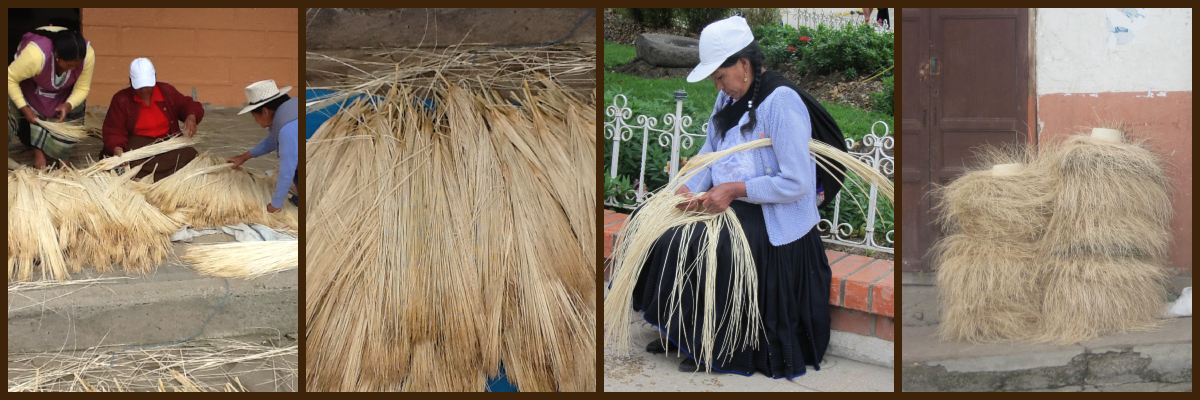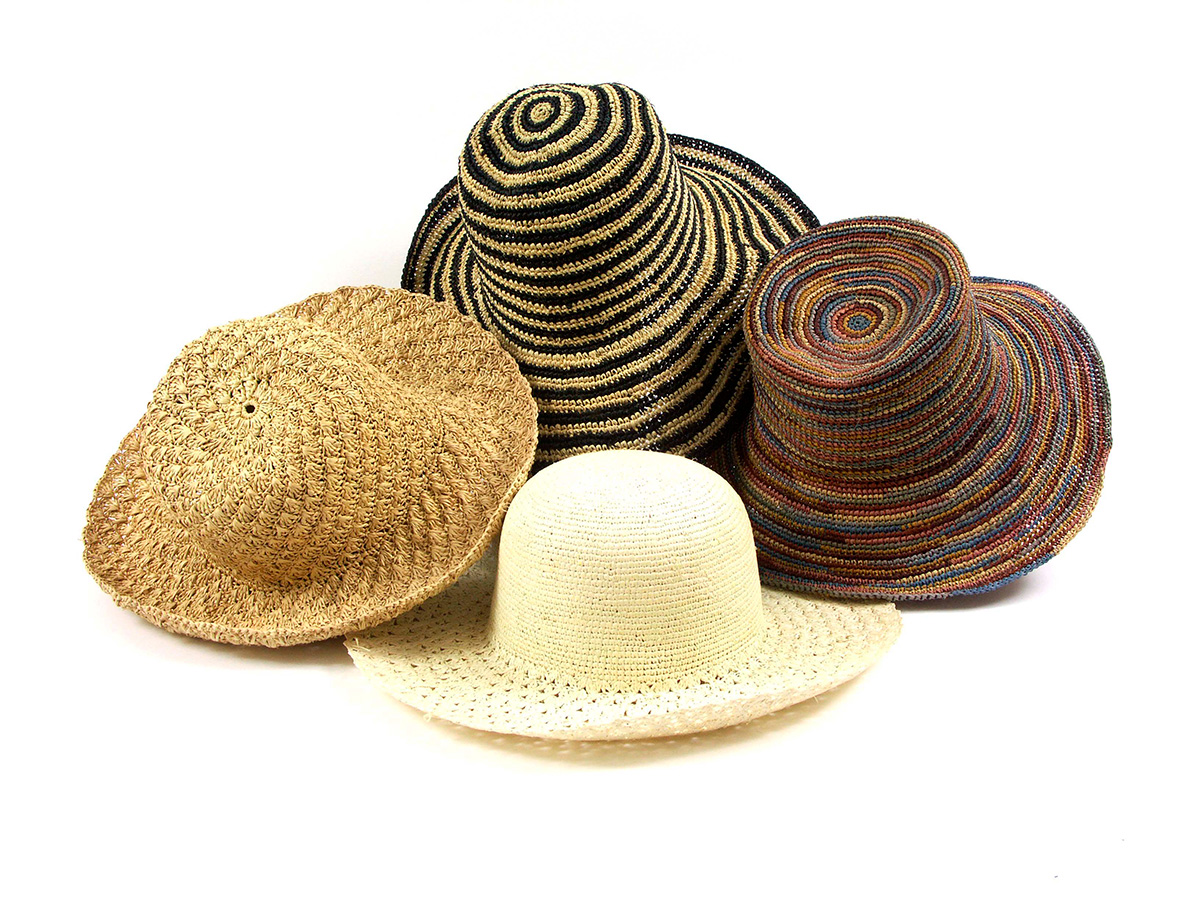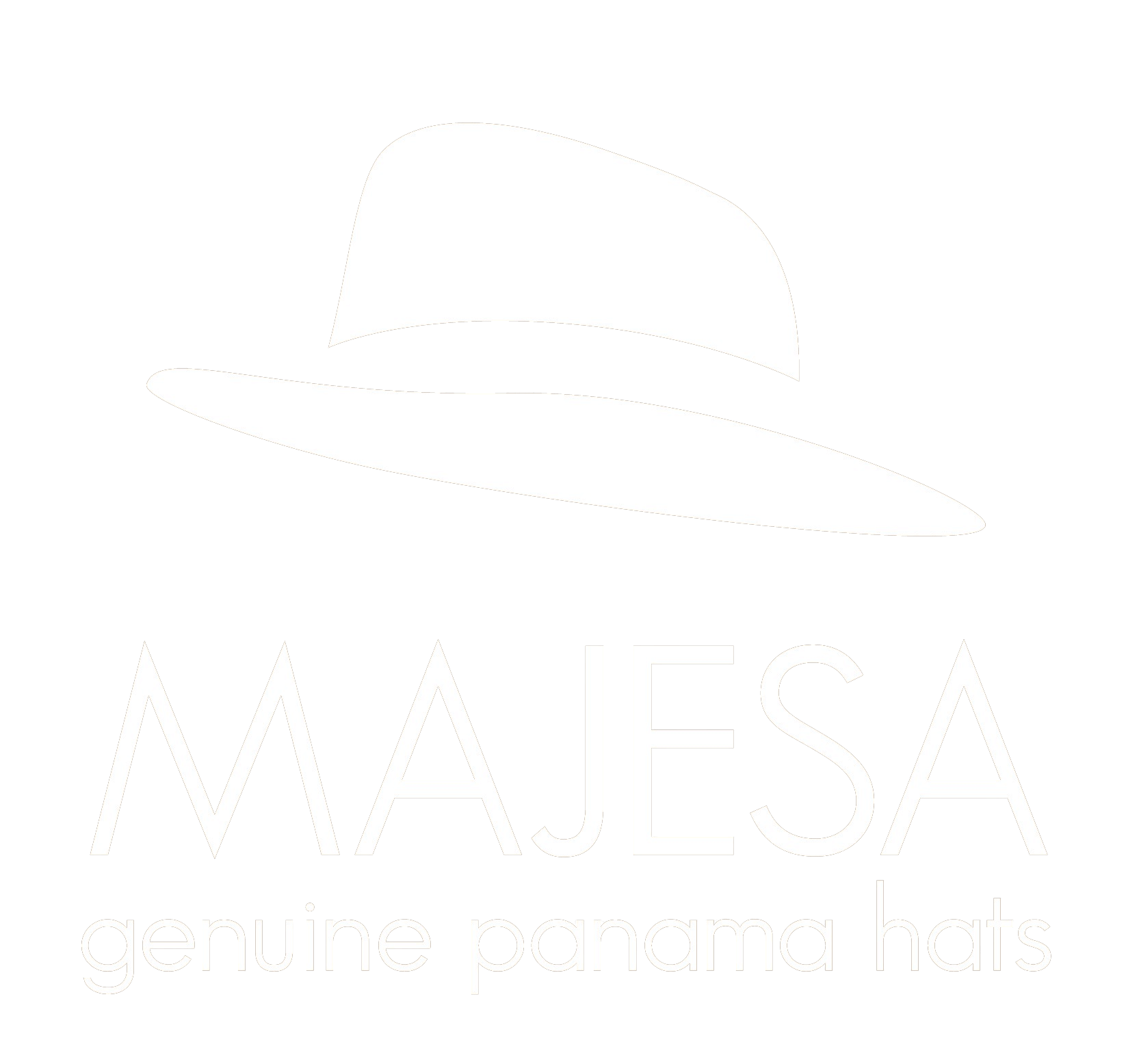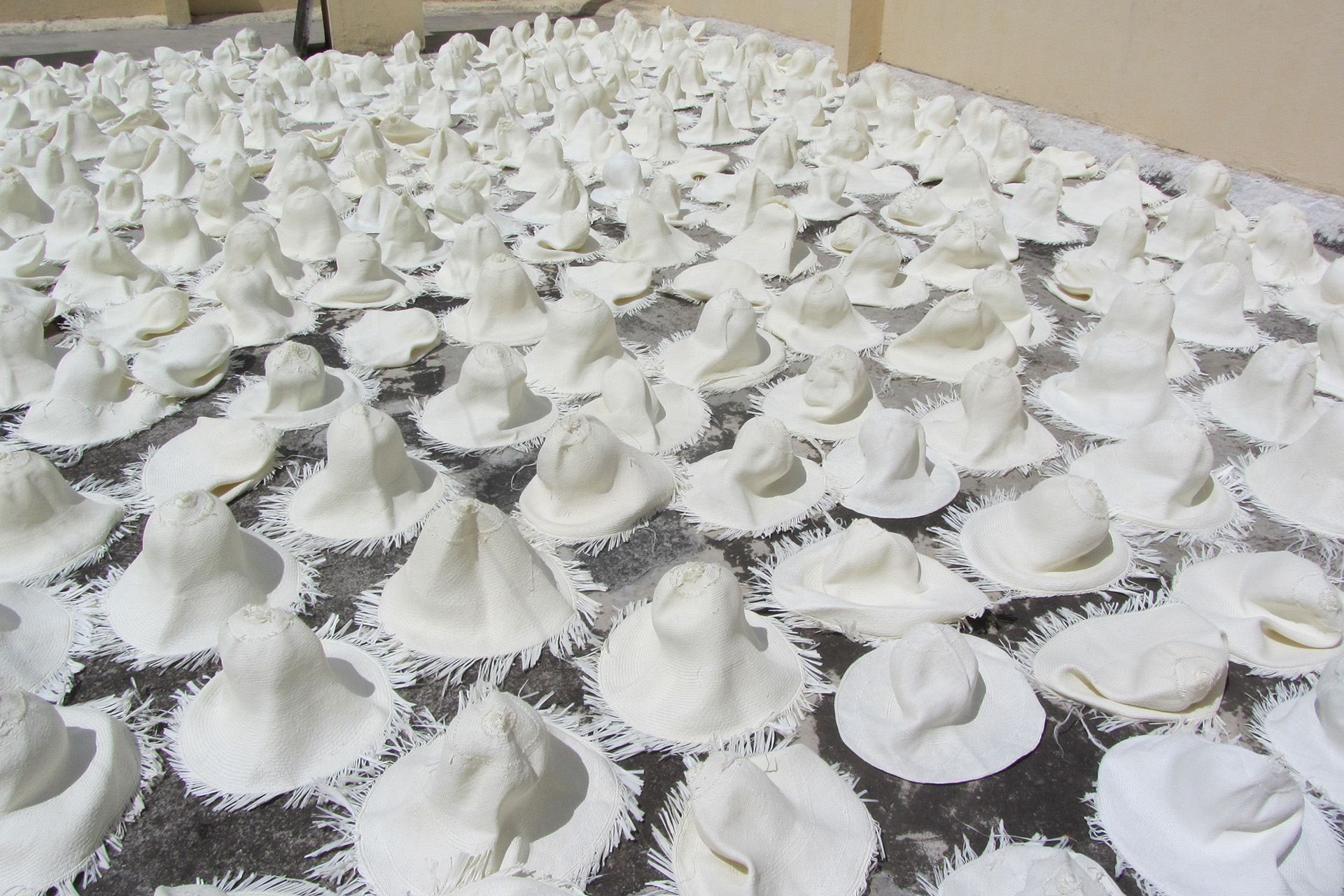Panama Hat History
By an unusual quirk of history, the Isthmus, linking North and South America, has given its name to an elegant head-dress known throughout the world as THE PANAMA.
At the turn of the century, the men whose strength and fortitude, tested under a tropical sun, sliced the continent in two, used as protection the elegant fibre hats from ECUADOR, and in so doing inadvertently "christened" them with a name which belies their origin.
For ECUADOR, this has been a mixed blessing. That the canal was responsible for the PANAMA'S great popularity in the early part of the century is without question. But, in that it has created confusion concerning its origin has ever since been lamented by its true creator and only country of origin and manufacture, ECUADOR.
PAJA TOQUILLA, indigenous to the coastal regions of ECUADOR, is the plant from which PANAMAS are woven. Their history can be traced as far back as the Incas who were the first to weave hats from this fibrous plant. Such hats were first observed in the 16th century.
In the 18th century they found their way into the United States where their superior qualities were quickly appreciated and where they have been much sort after ever since.
During the American-Spanish war (1898), the US Government ordered from ECUADOR 50,000 "sombreros de paja toquilla", as they are correctly called, for their troops heading for the Caribbean. But earlier, in 1855, a Frenchman living in ECUADOR took some to the World Exposition in Paris. The finest was presented to the great French dandy, Napoleon III. From that time on, the "toquilla" has reigned supreme over the crowed heads of Europe.

In England, much encouraged by royal patronage, THE PANAMA quickly attained the enviable position as the most fashionable summer hat: a position it has retained to the present day.
"One hundred pounds for a PANAMA, enough with which to take three month's holiday: enough to keep your son at college, enough to buy a small farm..."
So proclaimed the writer of an article in the Strand Magazine in 1902 when describing the phenomenon of the PANAMA HAT craze that had hit society at that time. What would the equivalent price be today? Or why were such sums paid for a mere hat? Even Edward VII parted with £ 90.00 after asking his Bond Street hatter to obtain the "finest PANAMA available!"
It was a craze that was given a further boost in 1906 when President Theodore Roosevelt was photographed wearing one when viewing the Panama Canal under construction.
Although its popularity waned in the post-war period, it is today enjoying a remarkable return. Its revival has been attributed to its appearance in the period films and television series reminding us just how elegant and good looking THE PANAMA HAT can be. It has also featured in television commercials thus increasing people's awareness of its attractiveness.
One important feature of THE PANAMA is that every hat is unique. Their weaving is a cottage industry carried on in the simple homes of ordinary country folk in the districts of Manabi and Azuay. It is a unique skill handed down from generation to generation. These craftsmen can produce a hat in one or two days. However, the finest, from the towns of Biblian and Montecristi can take up to five months to weave.
The greatest weavers work only by the light of the moon or when the sky is overcast. Constantly dipping their sharp pointed fingers in water, they split the fibre razor thin, and with all the virtuosity of a spinning wheel, plait ring after ring of palm into fabric so soft and dense that it equals silk. The hats are then pummelled, trimmed, groomed, scrubbed and branded with "fabricado en Ecuador".
THE PANAMA should never be described as a straw hat! Paja Toquilla, from which they are woven, enables such a wide variety in quality as it can be extracted from the plant in many variations of thickness and suppleness to suit all tastes and pockets. Having drawn the strands from the plant and graded them as required, the hats are then woven by hand, starting from the apex of the crown. This has to be done in a humid atmosphere, hence the earlier reference to weaving by moonlight and under overcast skies.
The finest quality PANAMAS have a silky, creamy smooth texture in which the weave is barely perceptible, but if held up to the light, a spiral of rings will be seen spanning out from the apex of the crown.

These concentric rings, or "vueltas" indicate where new strands have been started in the weaving process: it is the number of "vueltas" that determines the quality of THE PANAMA. In the cheaper and most common quality that might take a day or two to weave, there may be up to ten "vueltas" whereas in the finer quality, or "finos", there could be up to twenty. However, in the very finest quality the number could be as high as forty!
THE PANAMA HAT can, of course, be blocked into any "trilby", "Fedora" shape, but the traditional and most popular has always been the "folder". This hat has the distinctive ridge running from front to back over the crown providing a functional purpose. By virtue of its malleability, it can be folded in on itself enabling it to be rolled up for storage or travel: a most desirable feature for any hat particularly when travelling to warmer climes. It is said that one of the finest quality hats, when folded in this way, would pass through a wedding ring.
Another interesting aspect of its history is the tradition of the black band with which the majority of PANAMAS are trimmed. This originates from its most popular period in 1901, the year of the death of Queen Victoria.
THE PANAMA HAT was selected by the Conrad Foundation for the 1985 Boilerhouse Project at the Victoria and Albert Museum, as one of the "100 best designs ever". A belated accolade for one Francisco Delgado who is credited with having originated THE PANAMA in the Manabi district of ECUADOR in the 17th century. Locally, his name is still revered.
Another name synonymous with fine quality PANAMAS in Montecristi, a small town in ECUADOR where to this day the finest quality PANAMAS are still woven.
Let us hope that the new-found popularity of THE PANAMA, which in the coming season is expected to be greater still, will benefit those skilled custodians of such a wonderful, historic and truly ancient craft.

